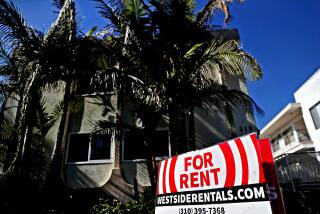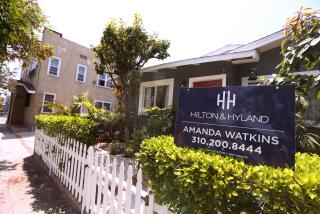Office Market Recovery Seen in 2004
The depressed office and industrial real estate markets in the Los Angeles region will start to recover in mid-2003, but a full rebound is more than a year away, according to a report released today by the Lusk Center for Real Estate at USC.
That means that the first half of next year should be an optimum period for office tenants to lock in rents before they increase, said Raphael Bostick, who conducted the study.
“By 2004, the region’s office market should be in a full-blown recovery,” said Bostick, “with declining vacancy rates, rising rents and less generous concessions from landlords, whose profit margins will noticeably improve.”
Bostick, a former senior economist at the Federal Reserve, was hired a year ago to produce periodic real estate reports for USC using funds from a grant received from Los Angeles real estate developer Alan Casden. This is his first forecast.
Southern California’s office market softened when the economy contracted in 2001. The office vacancy rate in Los Angeles County, for example, rose from slightly more than 12% in premium buildings in 2000 to more than 16% in the third quarter this year. Average asking rents stalled at $2.50 per square foot per month. To attract tenants, many landlords reduced rents and increased concessions such as space improvement allowances.
Vacancies will continue to fall slightly over the next two quarters, Bostick said. After that, the region’s long-awaited economic recovery should begin to drive up occupancy rates, resulting in fewer landlord concessions and higher rents.
Growth will come primarily from financial businesses, including banks and securities dealers, and service providers such as accountants and lawyers. Telecommunications tenants should make a comeback by 2004.
A regional breakdown suggests some markets will recover much faster than others:
* Los Angeles County: The brightest long-term prospects for office landlords are in the San Gabriel Valley, which performed well during the recession and appeals to businesses that are expected to lead the recovery. Its relatively low rents and proximity to key business centers make it attractive to tenants.
Other office districts expected to prosper and to eventually raise rents include downtown Los Angeles, Wilshire Center and the east San Fernando Valley. The Westside, in contrast, will continue to struggle as expensive space vacated by technology and communications businesses drags down the market.
Rents in the industrial market have held steady during the downturn and should remain flat through next year, then rise in 2004 as the county’s manufacturing sector resumes growth and drives vacancy rates below 4%.
* Orange County: The office market was a casualty of the telecommunications and tech meltdowns. High vacancy rates -- the average jumped from 7.8% in late 2000 to more than 15% by the first quarter of 2002-- and falling or flat rents will continue to be the norm until the regional economy achieves a sustained rebound by the end of 2004.
Industrial rents and vacancies should remain flat through the third quarter of 2003, at which point the economy should recover strongly and push occupancy and rents up through 2004.
* Inland Empire: The strongest office markets -- Ontario Airport, Riverside and San Bernardino -- attract businesses involved in international trade and will experience tenant growth through the next 18 to 24 months. Rents will rise more slowly but show noticeable increases by the end of 2004.
The industrial market remained stable, even robust, through the economic slowdown, with vacancies topping at about 8% and annual rents steady at about $4.50 a square foot.
“Parts of the Inland Empire are recession-proof,” Bostick said. He predicts that the region’s concentration of international trade-related businesses will lift occupancy and rents over the next 24 months, but not dramatically.
More to Read
Inside the business of entertainment
The Wide Shot brings you news, analysis and insights on everything from streaming wars to production — and what it all means for the future.
You may occasionally receive promotional content from the Los Angeles Times.











